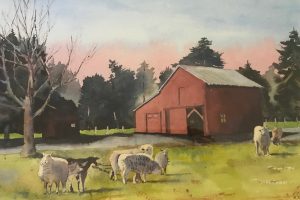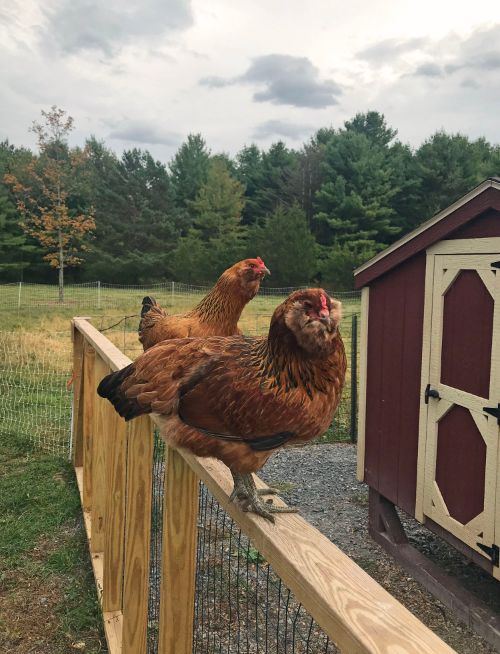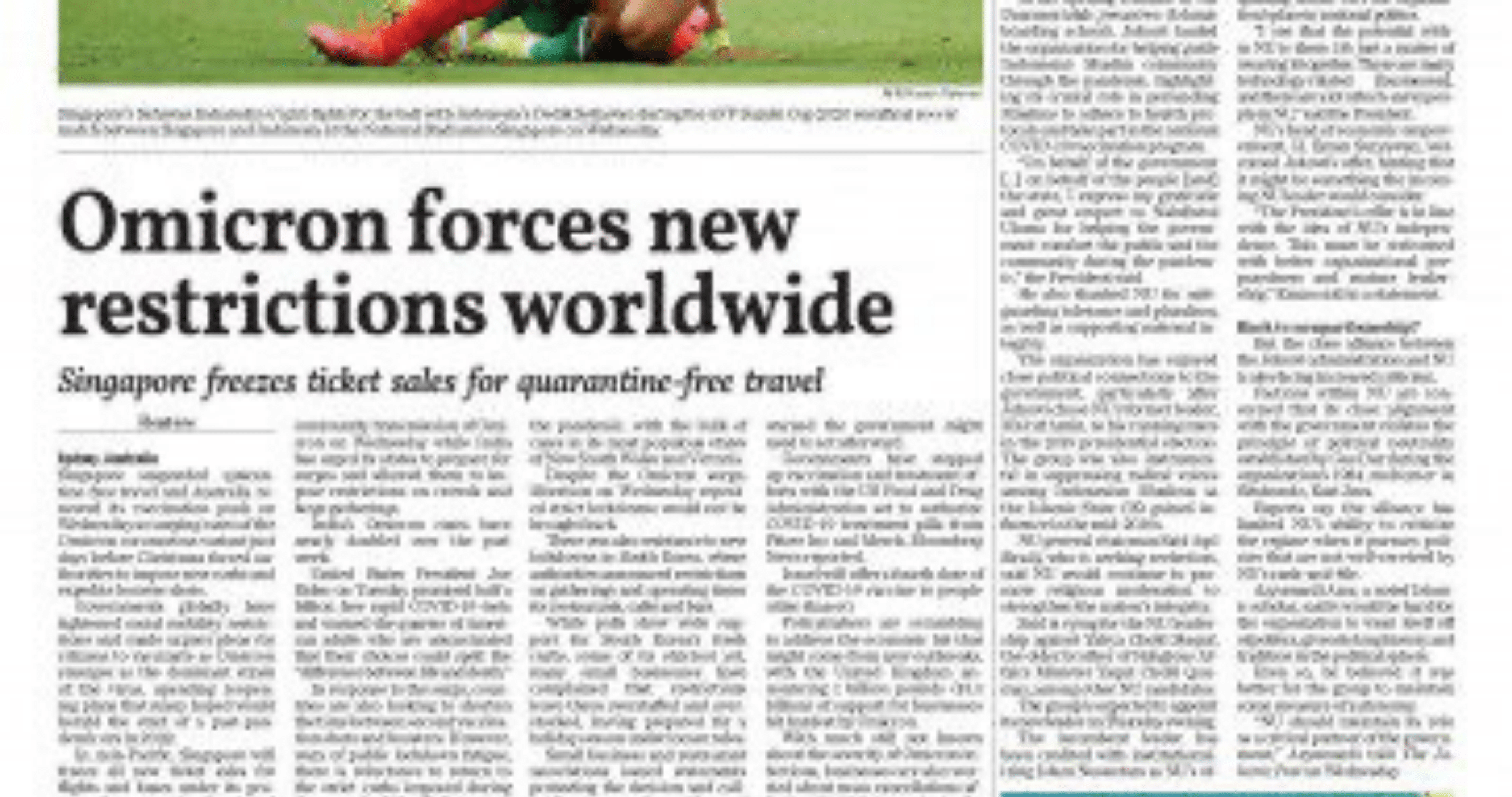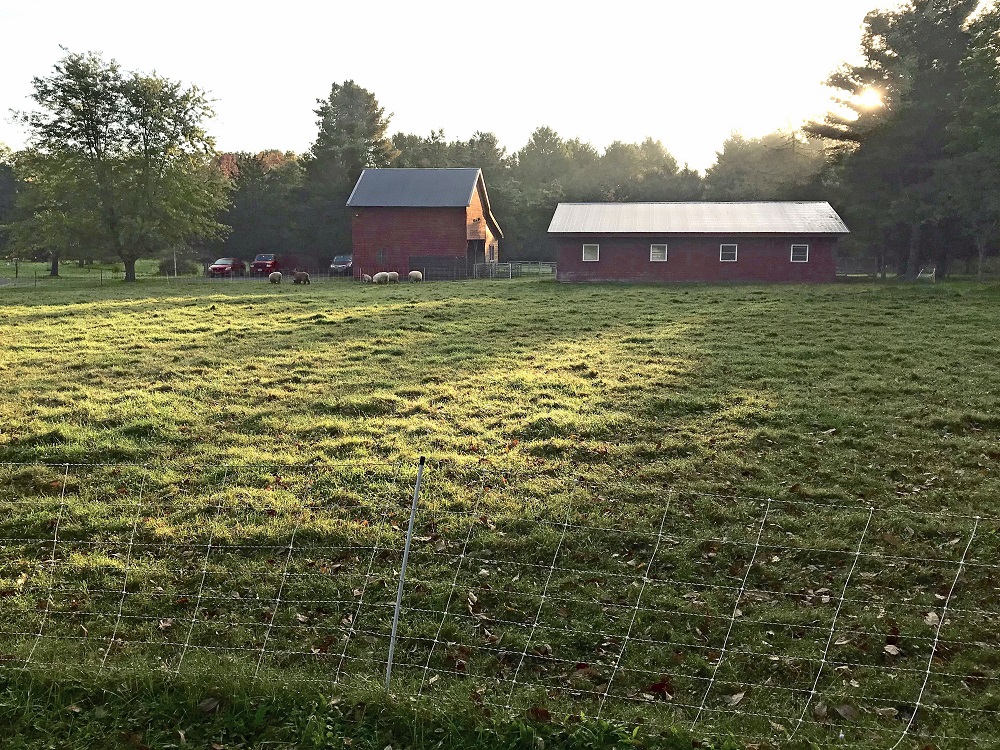We are quite hunkered down out here on New Fadum Farm. New York State has imposed strict lock down rules. The CDC now requires that we wear face masks. We are meeting and even exceeding all of these requirements because we have an unborn baby to protect and want to be as careful as we can be. Back in late February, Deborah filled our chest freezer, normally used for produce from the summer garden, to the brim with protein-laden staples. The chickens are now producing about 10 eggs per day and we get a milk delivery every Thursday from Meadowbrook Farms just up the hill.
Because of our rural circumstances, our isolation is not creating big problems for us. With 40 acres out back and bright spring days coming, we have lots to keep us busy. Two weekends ago, my son-in-law and one of his daughters built a bridge over the brook in the back ravine, a project we had not been able to get to for years. This past weekend we got the chipper going on the back of the tractor. I never knew that mulch made from chipped pruning from the apple trees had special properties—something about a balance of fungi in the soils around the fruit trees. I still have to figure out what to do about the chicken pen. The chickens have defeated my most recent efforts to build a secure chicken yard around the pen and are now roaming all over the property as one big flock. I need to redesign and rebuild the pen system before the flock finds and attacks Deborah’s newly sprouting gardens.
Our granddaughters, aged five and eight, are now racing through their online schooling to find time to be outside, often helping in the barn. The two of them built a wonderful pulley system to hoist cat food up into the hay loft so that the cats can feed on dry cat food in a place where the marauding chickens can’t bother them. All in all, life is good for us out on the farm. We are getting along just fine and maybe even enjoying a slower pace, finding some deliberate “hands on” stuff to pace our days. We are lucky indeed!
Occasionally, though, we do face some pressing situations that make us face up to the reality that we live in a bigger world and must cross the boundary to enter it, making our “contacts per day” a bit higher. Just last week we ran out of ice cream. This dire situation prompted Deborah to join me for the first time in three weeks to venture off of the farm. We decided that since we were fully CDC compliant wearing our facemasks and since we would keep at least 6 feet of social distancing, we could venture out to Stewarts, our local convenience store, to buy 7 half-gallons of ice cream.
As we walked into Stewarts we found four other people there. One customer was wearing a facemask but two others were not. The cashier behind the counter also wasn’t wearing a mask. I felt self-conscious, even silly, about “hiding” behind a mask in the same store where I have been buying morning coffee for years. I tried to rescue the situation with a joke. “OK, you guys. Don’t be afraid. We are not here to rob the store. We just want to buy ice cream. HA-HA”. This attempted humor did relieve some perceived awkwardness, but we were glad to retreat with our cache of ice cream in hand.
When we got home, I fell into some serious reflection. Is it a bit naive to parade around in face masks in the expectation that this low-tech gesture might actually help stop the pandemic that was at this moment washing over Upstate New York? That thought prompted the question, “How would one reverse the course of a pandemic, anyway? What causes a pandemic to turn around and begin to recede?” An idea followed. Ali’s model simulates a pandemic. Indeed, his model showed not just one but several waves of rising and falling infections. In it, the pandemic “turned around” several times. What stopped the pandemic in Ali’s model?
I decided to take a deeper dive into the mathematics of epidemics as a general class of systems. You can see some of the math in the “Read More—Dig Deeper” segment below. Or we can skip the math and just jump to some conclusions that come out of that math. I can think of three kinds of infections that have had major impacts on human populations: (1) the common cold, (2) the annual flu, and (3) HIV/AIDS. Let’s look at each of these in turn.
With respect to the common cold, we just let it progress through our whole population until pretty much everyone (but not everyone) has gotten it. This stopping point occurs when our “herd immunity” is high enough. This means that our normal pattern of contact and spreading the disease by things such as sneezing, coughing or close contact no longer spread the cold because most everyone with whom a sick person has contact has already had the cold. For the COVID-19 virus, this “do nothing” policy would have a way too high death count.
The flu is a second example. Like COVID-19, the annual flu can have a significant death rate and if left to its own devices would have a devastating impact in terms of deaths from each annual cycle of the flu. Therefore, our society spends a lot of time and effort to develop and administer annual flu immunizations. Scientists across the globe are working to develop an effective vaccine for COVID-19, but a widely available vaccine could still be a year or more away.
HIV/AIDS is a third example. Like the flu, as it spreads it kills people. Unlike the flu, no effective vaccine against HIV has been developed. But over the four decades that we humans have lived with this virus other approaches have been devised to limit transmission. For the first two decades the mainstay public health campaigns promoted testing and encouraged low-risk behaviors. Condoms against sexual transmission and needle exchange against intravenous transmission were and are widely available preventive measures. Currently, early case detection and treatment with highly effective antiviral medications have the double effect of prolonging healthy life for infected persons while rendering them virtually non-infectious. For high-risk populations, pre-exposure prophylaxis can greatly reduce the likelihood of becoming infected. Health departments and medical providers routinely apply standard public health policies that strongly encourage persons to get tested, trace back contacts of those who test positive, test those contacts and get them onto antiviral therapy if needed.
COVID-19 is most like HIV/AIDS. Until we get a vaccine, we need to live with a threat of widespread infection. Importantly, we must limit transmissions by the use of social distancing and put in place public policies that reduce average contacts per day per person. In places where the epidemic has expanded out of control (such as Wuhan, Tehran, or New York City) or threatens to do so, we impose lock downs. We hope that once the first wave has passed, we can back off to less disruptive policies that rely on vigilant testing, tracing back of contacts, and strict public health protocols that isolate infectious persons to protect the health of the population at large.
As I return to my reflections that day when Deborah and I came home from our expedition to buy ice cream at Stewarts, I am very proud of our actions that day. Deborah and I cannot develop a vaccine. We don’t know how to help develop and deploy the testing kits. But on that day, we were doing everything we could to reduce our contacts and our risk of infection. That is, we were doing our part to stop the pandemic in the only way that is currently possible while our society waits for fully implemented and test-based quarantine policies and for a vaccine. What’s more, if everyone did so as well, that would be the day when the pandemic would turn around, and its first peak would be past and the infection rate would start to decline.
To be clear, there was nothing at all silly about Deborah and David going out in public proudly wearing face masks. Those were not low-tech, largely symbolic gestures. We were deadly serious. We were showing our solidarity with the only currently viable option to stop this pandemic before it kills hundreds of thousands of Americans. If we follow procedures for low contact and social distancing measures as prescribed by New York State and the CDC, and importantly if everyone else does the same, we will for sure halt this pandemic in its tracks.
These are the only policies that can save lives before we have widespread, effective testing and, ultimately, a vaccine. But they are very expensive because they also shut down our economy. This high economic price is worth paying only if the time that is bought by suppressing the epidemic’s first wave is used by our society to develop, fund, and then implement a set of effective test-based policies that will identify persons in the earliest stages of infection and assure that they do not infect others. If we do not accomplish this promptly, we will have wasted the effort and expense of combatting the first wave, because we will not have testing and quarantine policies in place in time to avert a second wave.
The final big hope out there is that effective testing and well-designed and strictly enforced quarantine policies will buy our society even more time for the biomedical community to come up with the ultimate solution of an effective vaccine.
This Story Has Two Lessons
(1) COVID-19 can only be stopped when we reach a high enough level of herd immunity. This can happen two ways: Let it rip through the population—not acceptable—OR Develop a vaccine and immunize most of the population—possible but not yet accomplished. In the short term, all we can do is reduce the probability of transmission using social distancing and reduce contacts by expensive public health measures such as shutting down the economy.
(2) Smarter and less costly test-based policies can substitute for more draconian lock downs. To do this, however, we need abundant availability of testing, effective government-led public health protocols to test, trace and quarantine, adequate public health staff to carry out these activities, and social discipline to comply with the policies.
Read More to Dig Deeper
Here is my more detailed report on a deeper dive into some of the math of epidemics. I opened up Ali’s model and started to study his equations. They tell several stories—what drives the first wave, why the pandemic may have more than one peak, and how a test-based system of strict quarantine could stem the pandemic. To look at a simpler model, I asked Babak Bahaddin to create a version of Ali’s model that just addressed the first wave in clear and simpler terms. Babak is a former student of Ali’s who came to the United States to study system dynamics and information science. He has just finished his PhD and is about to take a position at the University of New Mexico where he can continue his work on water resource management. Babak is interested in how the shift from low water-intensity crops (such as alfalfa) to higher water-intensive crops (such as almonds and pecans) is impacting the aquifers of the Lower Rio Grande Valley in New Mexico and Texas. Since he also was pinned down by the pandemic, Babak had some time on his hands and quickly put together a generic model of an epidemic that was a simple version of Ali’s big model.
First, let’s note here that all epidemics in the whole of human history have eventually stopped. Most of them have stopped by themselves. That is, in the absence of modern medicine ¬— vaccines, tests to diagnose infection or detect antibodies, effective treatments to decrease mortality, and so on — all epidemics in the past have played themselves out.
How do epidemics stop themselves? In Babak’s model, I found a simple, mathematically precise, easy-to-understand relationship that answers this question. In the model, the simulation shows a point in time when an epidemic turns around, i.e. a time when the number of infected stops growing and starts to decline. On that special day, for the first time:
$${\text{Persons} \atop \text{Recovering}} > {\text{Persons} \atop \text{Getting Sick}}$$
On any day when the number of sick people who recover (or die, alas) is greater than the number who become infected, the number of sick people becomes lower. For Babak’s model we can calculate the conditions necessary for that to occur.
Hang on to your hats because we are about to do some algebra—you will need to dig back into your high school math classes to follow along. However, if you don’t like algebra, you can skip it, trusting that I got my algebra right :). A little digging around in Babak’s model yields an expanded version of this key relationship that has embedded in it a very interesting theory of why epidemics start to shrink and then stop themselves:
Algebra Alert: You can skip this box on your first read through if you don’t like equations!
The left side of the equation below is the number of persons who recover each day, the right side is the number of new infections each day. When the two are exactly balanced, the number of sick persons doesn’t change, but if there are more recoveries than new infections, the number of sick persons drops. (Deaths also reduce the number of sick persons, but in the model their number is relatively small , so we’ll ignore deaths in this discussion.)
$\displaylines{{\text{Persons} \atop \text{Sick}} × \frac{1}{\text{Recovery} \atop \text{Time}} = {\text{Persons} \atop \text{Sick}} × \left\{{\text{Contacts} \atop \text{per Day}} × {\text{Fraction of} \atop \text{Persons Susceptible}} × {\text{Probability} \atop \text{of Contagion}}\right\}}$
Let’s say that in Babak’s model the Recovery Time is 7 days, meaning that on average every person stays sick for one week. The left hand side of this key equation then tells us that on any given day one seventh of the Persons Sick recover. In Babak’s model, the Contacts per Day is 15 implying that each day, each sick person is in direct physical contact with fifteen others. Only those who are susceptible are at risk of infection. The Probability of Transmission in Babak’s model is .05, meaning that each time a sick person is in contact with a susceptible person, there is a 5% chance that the virus will transfer. So, in simple numeric terms, the mathematical condition for turning the epidemic around in the simulated world of Babak’s model is:
$\displaylines{{\text{Persons} \atop \text{Sick}} × \frac{1}{7} = {\text{Persons} \atop \text{Sick}} × \left\{15 × 0.05 × {\text{Fraction of} \atop \text{Persons Susceptible}}\right\}}$
Even more simply put:
$\displaylines{\frac{1}{7} =15 × 0.05 × {\text{Fraction of} \atop \text{Persons Susceptible}}}$
Since Fraction of Persons Susceptible is equal to (1-Fraction of Persons Immune), we have one piece of algebra that gives us a pretty good idea of when the epidemic that is raging in Babak’s model will turn around and start to shrink. It will start shrinking when:
$\displaylines{\frac{1}{7} = 15 × 0.05 × \left(1- {\text{Fraction of} \atop \text{Persons Immune}}\right)}$
OR
$${\text{Fraction of} \atop \text{Persons Immune}}= 0.81$$
What happens in the simplified world of Babak’s is simulation, indeed what has happened in most epidemics in human history, is that a highly contagious infection rips through a population until some relatively large fraction of the population becomes immune, with most or all acquiring immunity by having been being sick. In Babak’s simulated world this fraction is .81: if at least 81% of the (uninfected) population is immune, the epidemic cannot sustain itself. There are still new infections after this point, though their numbers are declining. Depending on how easily the disease spreads and how many people are sick at the point, infections continue at a high enough pace that, in the end, virtually everyone gets infected. This is precisely the mechanism that Mother Nature uses to stop pandemics and this is the mechanism that will stop the current pandemic unless we as a society do something else.
We as a society should be very motivated to do something else. Let’s say that Babak’s simulated society has 325 million people in it, just about the same population as that of the United States. In addition, let’s assume for now that in Babak’s simulated world, the death rate from the epidemic is in range of what has already been observed in China or Italy or Iran. Let’s assume 1%. In Babak’s model, starting with all persons susceptible, the epidemic proceeds until almost everyone – 325 million – have become infected. By the time the pandemic stops:
$\displaylines{{\text{Simulated Deaths in} \atop \text{Babak’s World}} = {\text{325 Million} \atop \text{Persons}} × 0.01 ≈ {\text{3.25 Million} \atop \text{Simulated Deaths}}}$
This many deaths is simply not acceptable, but that is how the epidemic in Babak’s model will play out, if left to its own devices. Fortunately, in Babak’s model (as in our real world) there are three much better alternatives available to us. Let’s look at these three options one at a time.
First we can develop a vaccine. In Babak’s model and in our world we have the identity:
$\displaylines{{\text{Total Fraction of} \atop \text{Persons Immune}} = {\text{Fraction of Persons} \atop \text{Naturally Immune}} + {\text{Fraction of Persons} \atop \text{Who Have Recovered}} + {\text{Fraction of Persons} \atop \text{Vaccinated}}}$
In Babak’s simulated world, if we are able to vaccinate enough people so that the (Initial) Total Fraction of Persons Immune is at least o.81, we will have solved the problem with no further deaths. Unfortunately, we do not yet have a vaccine that will work. What can we do until the medical community can develop, test, and administer a widely effective vaccine?
A second very powerful human response exists in Babak’s model as well as in our real world. This second response reduces to using tests to accurately identify those persons who are sick and then putting them into a strict quarantine. Fortunately, quite a few different creative policy designs for such quarantines exist (more on that later). You can easily see how powerful and effective this would be by performing the simple thought experiment of locating every single sick person in the United States and putting them in an isolation booth where they could be treated, but never be in contact with any other humans. Of course, this is very hard to do in the real world, but quite easy to implement in Babak’s simulated world. If we go back to the “master equation” up at the top of all our algebra box, we realize that it is not really the stock of Persons Sick that would be driving the flow of Persons Getting Sick. Rather the stock that drives growth in the epidemic would become:
$\displaylines{{\text{Persons} \atop \text{Sick}} × \left(1 – {\text{Fraction of Sick Persons} \atop \text{Quarantined}}\right)}$
In Babak’s model (and Ali’s model and in the real world), if we can rapidly identify and isolate a high enough fraction of the infected population, we will start the process of shrinking the epidemic. The problem in the real world (as opposed to in Babak’s model) is that this policy requires a massive program of testing to identify persons as soon as they get sick and the capability to confine them until they recover. In practical terms, we need to (1) develop affordable tests to diagnose the disease and make them readily available in every city, village, and town, and (2) create the social discipline, organizational capacity within our public health system (in every county and small town) and the legal framework, including enforcement if necessary, to design and implement set of real world quarantine policies, and (3) ensure that a proper legal framework is in place to support the policy. At this moment in time, our society lacks these conditions. Scientists and administrators are still working on raising our testing capabilities to the desired level, and our public health systems lack the depth and resources to monitor every diagnosed case. As I write these words, public health epidemiologists are developing mathematical models of the pandemic, similar to Ali’s but with a lot more data and calibration, to support and design what legislation or mandates we need to make the quarantine work. In time, hopefully soon, this important work will be done. But not yet.
Fortunately for all of us, there is a third path forward. There are simple public health interventions such as keeping social distance and reducing the number of contacts between everyone in society. We can see how this works by returning one more time to the algebra box above. Let’s assume that the Fraction of Persons Susceptible is around 1 (which is true near the start of the epidemic). Then the mathematical condition for stopping the growth the epidemic and beginning the process of shrinking it in Babak’s simulated world occurs when:
$\displaylines{\frac{1}{\text{Recovery} \atop \text{Time}} > {\text{Contacts} \atop \text{per Day}} × {\text{Probability of} \atop \text{Transmission}}}$
In the real world, we do not yet know what the actual average recovery time is for this pandemic. We do not know for sure the average number contacts per day for the whole population. Most importantly, the disease’s contagiosness (probability of transmission per contact) is not yet fully understood. However, in the simulated world of Babak’s model we do know these values precisely and they are:
$\displaylines{{\text{Recovery} \atop \text{Time}} = \frac{1}{7} = 0.1429; \: {{\text{Contacts} \atop \text{per Day}} × {\text{Probability of} \atop \text{Transmission}} = 15 × 0.05 = 0.75}}$
Simple arithmetic now tells us that if the product of contacts per day and probability of contagion were reduced to less than 0.1429 (the decimal equivalent of $\frac{1}{7}$), which is or to 19% of their its original value (as shown above), then persons recovering each day would exceed persons getting sick each day and the epidemic would start to shrink. This is, for me a stunning result. It means that if Deborah and Iinfected persons would can reduce theirour d number ofaily number of daily contacts from 15 down to 7, and if we they ccould reduce our probability of contagiontheir probability of transmitting the disease from .05 per contact down to 0.02 by practicing social distancing measures such as wearing our a facemask then Contacts per Day × Probability of Transmission wouldwe would be right down around 0.14, the level needed to turn the epidemic around and it would start to decline. We and others around us would still be at some risk because epidemic is still theresome transmission would still be occurring, but the process of shrinking would have begun. Do the math. It is really that simple and powerful. Why should Deborah and I reduce our contacts and wear facemasks, then? It’s because (1) in the early stages of the disease people (including us) may be infectious before even the earliest symptoms develop, (2) we are reducing our own risk of infection should we encounter an infectious person and (3) we are demonstrating our social responsibility by showing others that we take the epidemic seriously and are taking steps to protect them.
Ali’s model, Babak’s simple version of Ali’s model, the ISEE systems simulator, indeed a whole fleet of scientifically grounded and data/numerically-based models, are helping us all to see how our collective actions now are the first step in a broader strategy to stop this pandemic before…





